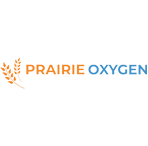Not all home oxygen providers are created equal.
Choose the best: 100% local, 110% reliable, Prairie Oxygen.
Radio-Ad-Oxygen
We Answer Your Calls Locally
When you call us, you get a knowledgeable professional near you.
Quick Response
We will get you started on oxygen the day you come home from the hospital or as soon as it is convenient for you.
High Standard of Care
Respiratory Therapists, Nurses and Sleep Technicians on staff. Our services are certified by Accreditation Canada with while earned exemplary status.
We Fit Your Needs And Budget
We offer quiet, lightweight systems and recommend the best option for your quality of life.
How do you get approved for funding?
You could be approved for funding if you meet the SAIL
Home Oxygen Qualification Criteria:
Continuous Program
- Room Air Arterial Blood Gas
- Pa02 ≤ 55mmHg
- Pa02 ≤ 59mmHg with Cor Pulmonale or Polycythemia
- Room Air SpO2 ≤ 87% for 2 continuous minutes
- SP ≤ 90% with Cor Pulmonale or Polycythemia
Exertional
- Exertional Saturation on Room Air
- 1st – SpO2 ≤ 87% for 20 continuous seconds
- 2nd – Subsequent test on oxygen must show:
-
An improvement in oxygenation
-
Patient must be able to walk 20% further on O2
-
Exertional Oxygen patients must not have been hospitalized in 30 days prior to testing
-
Nocturnal
- 1st – SpO2 ≤ 87% for 30% of the Night Test
- 2nd – Night Test with Oxygen Use to show improvement
Private Options are available as well.
24-Hour (Emergency Service)
Monday – Friday between
We Check In With You
Oxygen FAQs
Why is my regulator whistling?
Why is my concentrator alarming?
For an intermittent audible alarm and solid ORANGE light: This indicates low oxygen.
- Ensure your tubing is free of kinks
- Ensure the flow is set above ½ lpm
- Ensure the air intake filter is clean
For an audible alarm and constant red light
- (If the GREEN power light is still on) Switch to a backup cylinder and call for assistance
- (If there is no GREEN light on) There is a problem with the power source. Ensure the concentrator is plugged in and check the circuit breaker for that plug.
Call Prairie for assistance if alarm persists at 1-877-748-8702
How often do I change my nasal cannula?
Why is there water in my tubing?
This is due to condensation when you use a humidifier bottle on your concentrator. Mostly occurs during winter time or in colder rooms. The oxygen is warm when it leaves the concentrator, once it passes through the water bottle to pick up some humidity it starts to cool off when it reaches the tubing on a cold floor, causing it to create droplets of water. To help this:
- Insert a water trap to prevent water running through tubing into the nostrils
- Have the tubing from the concentrator angled upward with a hook or door knob, to prevent it from reaching the ground right away.
- Remove humidifier bottle
- For a quick fix to remove water from oxygen tubing: Attach long hose to an oxygen cylinder at a higher flow to have the water pushed out quickly to dry the tubing out.
Can I become addicted to oxygen?
Can too much oxygen hurt me?
Will I have to use oxygen forever?
Do my oxygen tanks expire?
How long do I wear my oxygen for?
Should I purchase a pulse oximeter?
Are my oxygen tanks dangerous?
Do not use or store your oxygen within six (6) feet of OPEN FLAME such as a lit cigarette, candle, lighter, matches, vaporizer, e-cigarette, fireplace, bbq, or a furnace
Use caution when around live electrical equipment and sparks.
Direct-Heat Source
- Stove, space heater, electric blanket, baseboard heater, hot water tank
Flammable material
- Gas, oil, grease, petroleum jelly, aerosol spray cans
FYI!!! For safety:
- Store a Type C fire extinguisher where it can be assessed easily in an emergency
- Post A No Smoking Sign on all entrances into your home
- Inform your fire department and home insurance agent of the presence of oxygen
- Make no attempt to repair any equipment
- Never attempt to oil or lubricate any of your oxygen equipment
Can I use Vaseline with my oxygen therapy?
Do I have to pay for my oxygen?
There are private options as well as government-funded programs. Saskatchewan Aids to Independent Living provides funding for specific oxygen “packages” if you meet the testing criteria. The testing is done by taking a measurement of your blood oxygen level using one of these methods:
- A blood sample or
- A pulse oximeter with a sensor that clips on the finger
